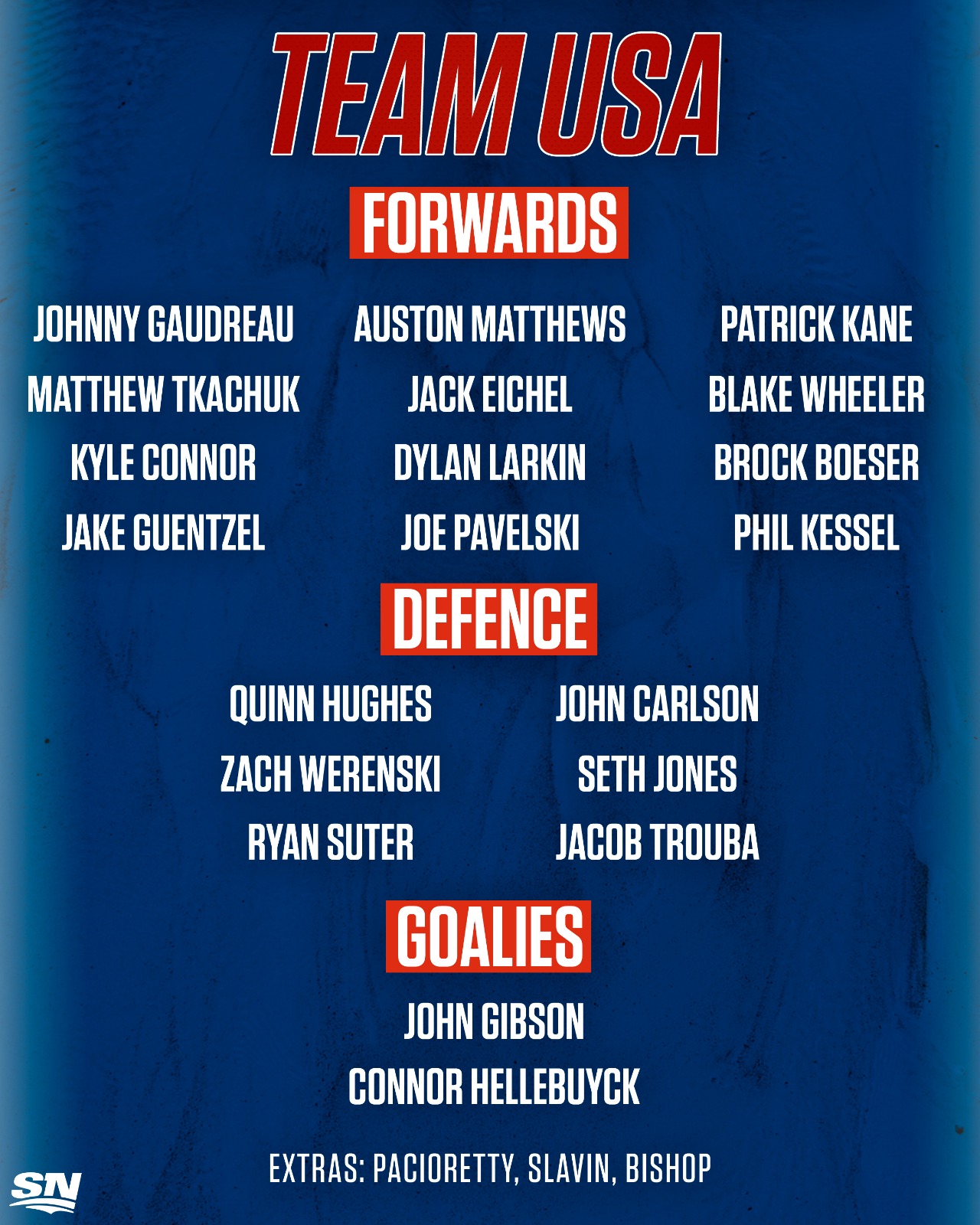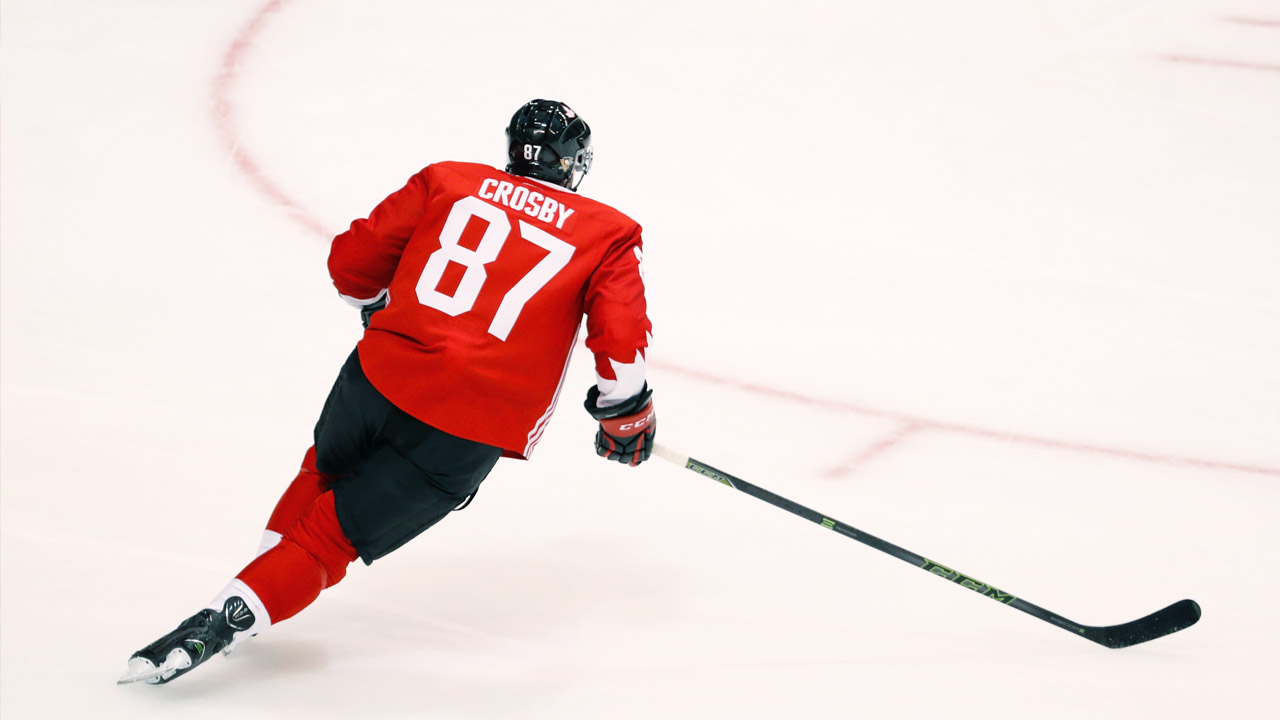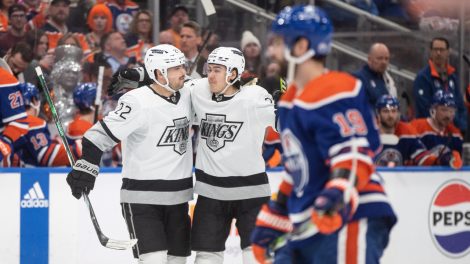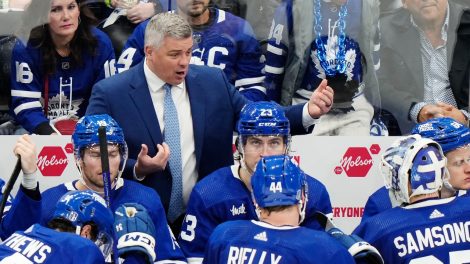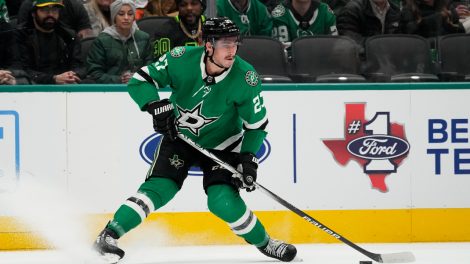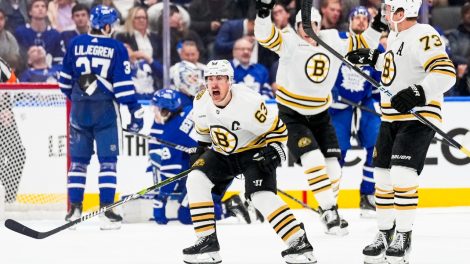It was the holler heard around the hockey world, a two-syllable call that set up a pass, which set up a goal, which moved a nation to elation.
“Iggy!”
A decade ago today, Sidney Crosby’s frantic call to Jarome Iginla in overtime of the 2010 Olympics’ gold-medal game spurred that historic game-winning tally, earning Canada the rare gift of hockey gold on home soil, and eventually coming to be known simply as ‘The Golden Goal.’
Ten years on from that marquee moment, the international hockey landscape has changed drastically. While the women’s teams have continued to send their best to the Olympic Games, the top names in the men’s bracket are one Olympics removed from participation, the NHL having barred their players from making the trek to Pyeongchang in 2018.
Whether that changes in 2022, as the Games move to Beijing, is unclear. Which means hockey lovers are stuck imagining the hypothetical combinations we’ve yet to see take flight at the sport’s highest level, the ones that only come in the upside-down world of the international game — generational talents Crosby and Connor McDavid suiting up side by side, or Team USA’s young high-flying phenoms finally joining forces to rep the stars and stripes.
That the game is brimming with young, elite North American talent at the moment only makes such potential unions more intriguing, with the number of recent inductees to the league’s upper echelon suggesting national rosters today might have a very different feel than the fairly consistent groups of the past few tourneys.
[relatedlinks]
What might the squads look like if, say, that Canada-USA gold-medal game was replayed today? On the 10-year anniversary of the Golden Goal, Sportsnet broke down one potential lineup for each nation.
Team Canada
Forwards
Brad Marchand — Sidney Crosby — Patrice Bergeron
There might be one lone trio among all the combinations on both squads that’s a given, and it’s this one. The last time NHLers suited up for an international best-on-best tourney, Sidney Crosby joined up with Bruins linemates Patrice Bergeron and Brad Marchand to straight up dominate the opposition, with Canada’s top line combining for 25 points through six games at the 2016 World Cup. Crosby finished as the scoring leader and MVP with 10 points, while Marchand paced all skaters with five goals. The chemistry here is a no-brainer: Crosby and Marchand have trained together in the off-season for years, giving each a good read of the other’s offensive-zone tendencies; Bergeron and Marchand play together all season; and Crosby and Bergeron have spent plenty an international tournament together. Top line – signed, sealed, delivered.
Taylor Hall — Connor McDavid — Nathan MacKinnon
This is where the Canadian roster gets most interesting, of course — the prospect of throwing explosive offensive dynamo Connor McDavid into the mix. Who might be the best fit to suit up alongside No. 97? How about we follow the lead of the Oilers captain’s GM and give him some speed? Nathan MacKinnon and Taylor Hall would check that box, with Hall lining up on his natural wing and MacKinnon shifting over from the middle to play with a fellow quick-footed phenom. Three MVP-calibre forwards, three skaters with deadly speed, three elite puck-movers with top-end vision. Tough to see how exactly opposing defenders could slow these three down.
Mathew Barzal — John Tavares — Mitch Marner
Any effort to build a Team Canada roster means marquee names omitted and gambles in place of more established stars (see: Kunitz, Chris). So let’s throw a wrench into bringing back the same group of veterans for another go-round and add some new blood to the mix. John Tavares ranks high enough among the game’s top pivots to warrant a returning spot. On his right side, Mitch Marner seems a natural fit — his own dynamic skill and special-teams ability likely earns him a shot on his own, but his chemistry with Tavares puts it over the top. On the left? A number of names could slot in there — we’ll go with his former Islanders teammate Mathew Barzal. If you’re going by point totals, he’ll seem a subpar choice. But ask those around the league about the best skaters in the game and the best stickhandlers in the game, and Barzal’s name comes up again and again. He’s the perfect type of versatile piece to throw into the mix in this setting.
Steven Stamkos — Mark Scheifele — Mark Stone
Mark Scheifele’s earned his place as one of the premier centremen in the game by this point, and while you could just as easily throw veteran Jonathan Toews into this slot, we’ll give the edge to the younger, hungrier Scheifele. On his left, Steven Stamkos, who remains a premier sniping option, even if he isn’t the dominant Rocket Richard threat he once was. On his right, Mark Stone checks into the mix, mitigating the loss of Toews’ penalty-killing abilities, given Stone’s place as the best two-way winger in the game. And, as a bonus, Stone’s move to Vegas has proven how dangerous a playmaker he is when given a shot alongside marquee offensive talents, which he’d certainly have here.
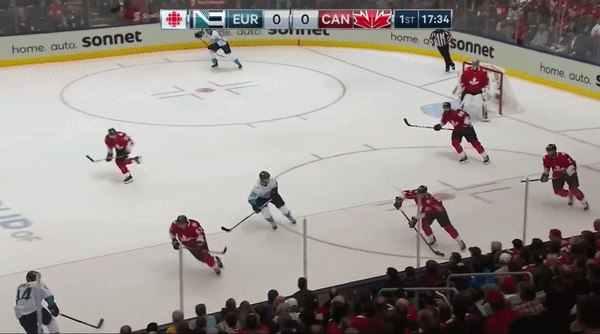
Defence
Mark Giordano — Kris Letang
The blue line seems worthy of far more change, given the age of some of the former Team Canada mainstays. One veteran who could still play a key role is reigning Norris Trophy winner Mark Giordano. The Flames captain’s relentless style sets the standard for the blue line, and he brings more than just pure offensive skill. That distinction goes to partner Kris Letang, who brings top-end offensive instincts, more Stanley Cup rings than any of others on this blue line, and established power-play chemistry with Crosby.
Morgan Rielly — Drew Doughty
With former regulars like Duncan Keith now into the twilight of their careers, young puck-movers like Morgan Rielly move into the picture. The Maple Leafs’ back-end leader established himself as one of the game’s premier offensive defenders with a 20-goal, 72-point season last year. Throw in Drew Doughty to balance that offence out, with the King playing an aggressively defensive game similar to the Western Conference veteran one pairing up.
Brent Burns — Cale Makar
Brent Burns has been a Norris finalist for three of the past four years, winning one of those, and has 42 points in the bag already this season even as the Sharks stumble. So, for his offensive abilities from the back end, he deserves to be in this mix, even if it means shifting him to the left side. You could just as easily slot Shea Weber or Alex Pietrangelo in here, but we’ll again opt for young blood and throw Cale Makar into the mix. The rookie’s already proven he’s on track to be one of the game’s blue-line best, and proved his big-game nerves during his post-season debut with Colorado last year.
Goaltenders
Carey Price
Marc-Andre Fleury
Even amid a tumultuous season in Montreal, Carey Price still seems the most logical choice to backstop the squad. And veteran Marc-Andre Fleury, given his play lately in Vegas, earns the No. 2. There’s a case to be made that Braden Holtby should be in that mix, but a brutal 2019-20 campaign makes him a less-convincing option. Younger options like Jordan Binnington or Darcy Kuemper could be worth a look, but neither have done enough to unseat the two veterans above on this type of stage.
Extras: Jonathan Toews, Shea Weber, Braden Holtby
We’ll tab Weber and Holtby as the extra defender and goalie. Toews’ career year in 2018-19 and long history with the national team makes him the next forward up, though it could just as easily go to Jonathan Huberdeau, who’s quietly put up the fourth-most points of any Canadian since the start of last season.
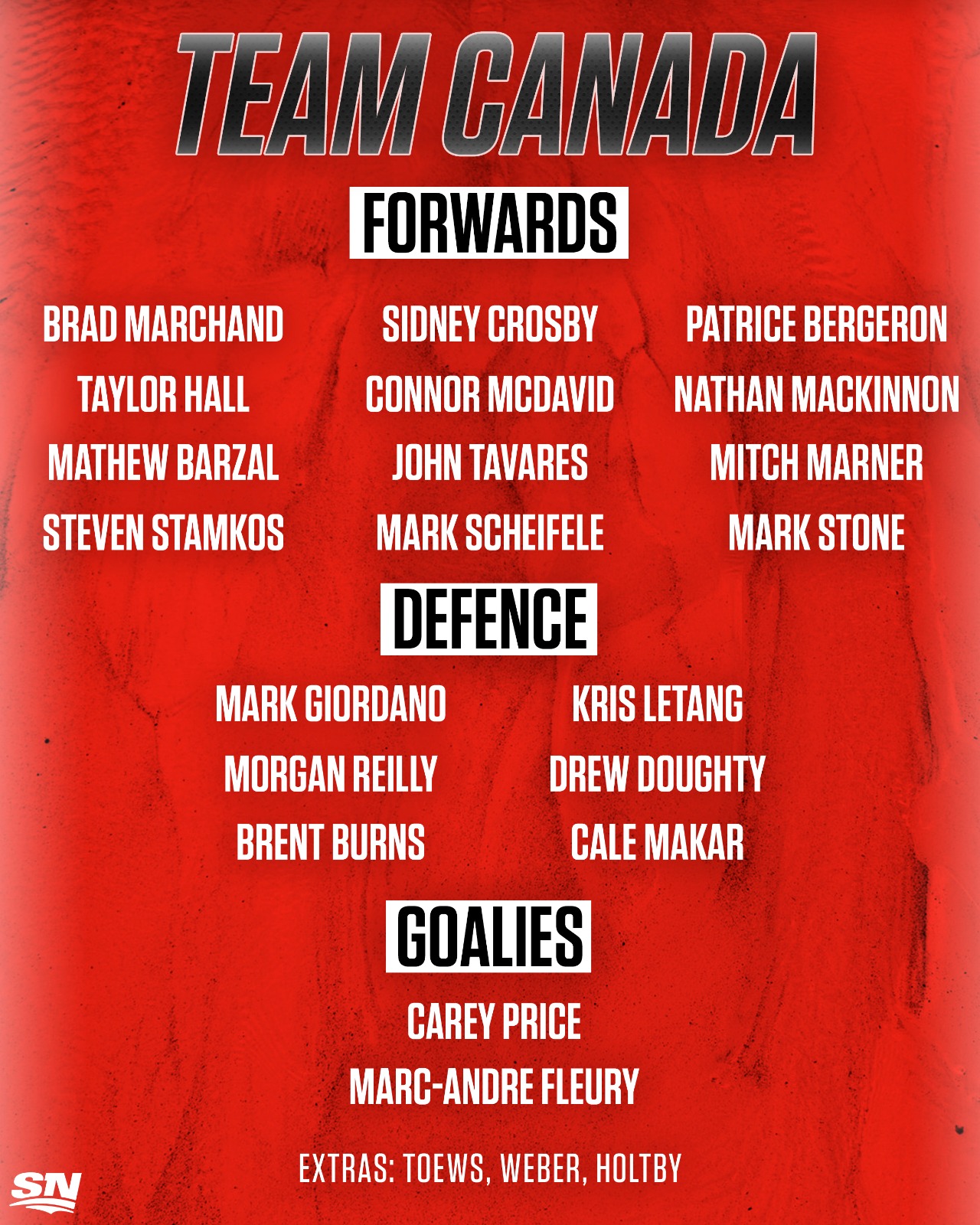
Team USA
Forwards
Johnny Gaudreau — Auston Matthews — Patrick Kane
If there’s one country that’s been most robbed of potential glory by the NHL’s Olympic absence, it’s Team USA, and the siphoning off of their young talent to ‘Team North America’ at the World Cup didn’t help. In this hypothetical, they get the chance to combine their golden generation with their established stars, starting with the top line. Johnny Gaudreau lines up on the top line opposite the winger he’s seemed to emulate throughout his career, with Patrick Kane coming back to the lineup as the top stickhandler in the game. Auston Matthews gets two elite playmakers to help feed him pucks, while Gaudreau and Kane get one of the premier triggermen in the league to finish off their dishes.
Matthew Tkachuk — Jack Eichel — Blake Wheeler
Matthew Tkachuk’s proven his worth among big-league Americans over the past season and a half, bringing plenty of offensive skill along with some much-needed sandpaper. He slots in alongside Jack Eichel, the second-highest American scorer since the start of last season, and veteran Blake Wheeler, who remains one of top U.S.-born dishers in the game. Wheeler’s playmaking ability would be particularly dangerous alongside Eichel, who’s been one of the top goal-scorers and volume shooters among his countrymen over the past few years. Alternatively, Flames wingers Gaudreau and Tkachuk swap places given the former has experience alongside Eichel in a Team USA sweater, while Tkachuk and Matthews have suited up alongside each other in their younger days.
Kyle Connor — Dylan Larkin — Brock Boeser
Rounding out the group, a trio of young stars who can do plenty of damage on the scoreboard. Kyle Connor’s got the third-most goals among all American NHLers since the beginning of last season, while Boeser — who’s twice hovered just below the 30-goal mark — seems on the cusp of becoming one of Team USA’s marquee snipers, once his health begins cooperating. Dylan Larkin lines up as the depth pivot, coming off his best big-league campaign yet, and bringing some high-octane speed from the Americans’ bottom six.
Jake Guentzel — Joe Pavelski — Phil Kessel
If you think Jake Guentzel doesn’t deserve a shot, check the scoreboard — the Cup champ put up 40 goals last year (and 20 in 39 games this season), giving him the fifth-most goals among all American since the start of last season. He lines up opposite Kessel — who led all Olympic skaters (from any nation) in scoring last time he suited up for Team USA, and put up 174 points over the past two seasons — with whom he got his Cup ring. Between them, veteran Joe Pavelski, who could tip his way to plenty of tallies between these two snipers.

Defence
Quinn Hughes — John Carlson
If there’s one area where Team USA might have their North American rivals beat, it would be right here: the top blue-line pairing. John Carlson currently reigns as the soon-to-be Norris Trophy winner, with 72 points in the bag already this season and roughly 20 games left to play. Quinn Hughes isn’t far behind, as the rookie’s already put up 50 points in his debut NHL season. The two back-end offensive dynamos rank first and fourth in blue-line scoring right now, respectively, and both rank higher than every Canadian defender.
Zach Werenski — Seth Jones
While Team USA might not have the Norris-calibre depth that the Canadians do, they have plenty of quality options lower on the depth chart. Young Blue Jackets Zach Werenski and Seth Jones — 22 and 25 years old, respectively — figure to be part of the Americans’ cause for a fair while. They also bring in the supreme advantage of well-established familiarity, coming from the same club and having spent plenty of time together on Columbus’ blue line. If there’s one position in a brief tournament that established chemistry is key, it’s this one. And just as Keith and Brent Seabrook, or Pietrangelo and Jay Bouwmeester, earned national team shots as a package deal, these two could bring some stability to the American roster.
Ryan Suter — Jacob Trouba
Ryan Suter rounds out the back end for the stars and stripes, with the veteran still able to eat minutes like no other and bring some veteran savvy to the young group. On his right side, Jacob Trouba, who’s emerged as one of the Americans’ top defenders courtesy of a 50-point campaign for Winnipeg last season. The duo would figure to bring some physicality to the table while still possessing enough offensive know-how to help their forward corps put pucks in the cage.
Goaltenders
John Gibson
Connor Hellebuyck
The Americans might just have the edge in goal too, with John Gibson remaining one of the most under-appreciated netminders in the game courtesy of the rebuilding team in front of him. On a competitive team with a capable blue line in front of him, he can be flat-out elite. And should he falter, Team USA has another steady, young option in Connor Hellebuyck, who’s only a year removed from a Vezina Trophy nomination.
Extras: Max Pacioretty, Jaccob Slavin, Ben Bishop
We’ll throw Max Pacioretty in as the extra forward, with the Canadien-turned-Golden Knight sitting with the fifth-most goals among all U.S. players this season. The ever-reliable Jaccob Slavin slots in as the next defenceman up, while veteran ‘tender Ben Bishop — a Vezina nominee just last season — slots in as the replacement goalie.
